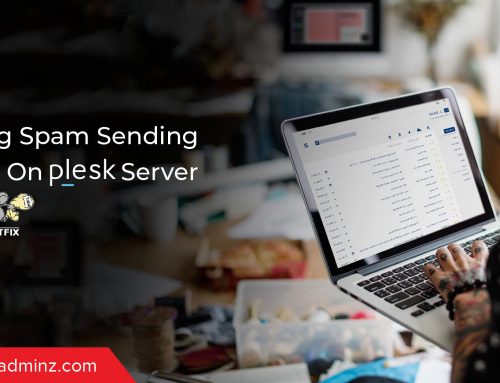In computing, a denial-of-service (DoS) attack is an attempt to make a machine or network resource unavailable to its intended users, such as to temporarily or indefinitely interrupt or suspend services of a host connected to the Internet. A distributed denial-of-service (DDoS) is where the attack source is more than one, often thousands of, unique IP addresses. It is analogous to a group of people crowding the entry door or gate to a shop or business, and not letting legitimate parties enter into the shop or business, disrupting normal operations.
One can easily come to know about the attacks by experiencing following
- Unusually slow network performance (opening files or accessing web sites)
- Unavailability of a particular web site
- Inability to access any web site
- Dramatic increase in the number of spam emails received—(this type of DoS attack is considered an e-mail bomb)
- Disconnection of a wireless or wired internet connection
- Long term denial of access to the web or any internet services
Denial of Service Attack Types
DoS attacks can be divided into two general categories:
1. Application layer attacks (a.k.a., layer 7 attacks) can be either DoS or DDoS threats that seek to overload a server by sending a large number of requests requiring resource-intensive handling and processing. Among other attack vectors, this category includes HTTP floods, slow attacks (e.g.,Slowloris or RUDY) and DNS query flood attacks.The size of application layer attacks is typically measured in requests per second (RPS), with no more than 50 to 100 RPS being required to cripple most mid-sized websites.
2. Network layer attacks (a.k.a., layer 3–4 attacks) are almost always DDoS assaults set up to clog the “pipelines” connecting your network. Attack vectors in this category include UDP flood, SYN flood,NTP amplification and DNS amplification attacks, and more. Any of these can be used to prevent access to your servers, while also causing severe operational damages, such as account suspension and massive overage charges. DDoS attacks are almost always high-traffic events, commonly measured in gigabits per second (Gbps) or packets per second (PPS). The largest network layer assaults can exceed 200 Gbps; however, 20 to 40 Gbps are enough to completely shut down most network infrastructure
How does DDOs Attacks Works
In a distributed denial-of-service (DDoS) attack, an attacker may use your computer to attack another computer. By taking advantage of security vulnerabilities or weaknesses, an attacker could take control of your computer. He or she could then force your computer to send huge amounts of data to a website or send spam to particular email addresses. The attack is “distributed” because the attacker is using multiple computers, including yours, to launch the denial-of-service attack.
In a typical connection, the user sends a message asking the server to authenticate it. The server returns the authentication approval to the user. The user acknowledges this approval and then is allowed onto the server.
In a denial of service attack, the user sends several authentication requests to the server, filling it up. All requests have false return addresses, so the server can’t find the user when it tries to send the authentication approval. The server waits, sometimes more than a minute, before closing the connection. When it does close the connection, the attacker sends a new batch of forged requests, and the process begins again–tying up the service indefinitely.
Defensive Techniques
Defensive responses to denial-of-service attacks typically involve the use of a combination of attack detection, traffic classification and response tools, aiming to block traffic that they identify as illegitimate and allow traffic that they identify as legitimate.
A list of prevention and response tools is provided below:
Application front end hardware
Application front end hardware is intelligent hardware placed on the network before traffic reaches the servers. It can be used on networks in conjunction with routers and switches. Application front end hardware analyzes data packets as they enter the system, and then identifies them as priority, regular, or dangerous.
Application level Key Completion Indicators
In order to meet the case of application level DDoS attacks against Cloud based applications, approaches may be based on an application layer analysis, to indicate whether an incoming traffic bulk is legitimate or not and thus enable the triggering of elasticity decisions without the economical implications of a DDoS attack. These approaches mainly rely on an identified path of value inside the application and monitor the macroscopic progress of the requests in this path, towards the final generation of profit, through markers denoted as Key Completion Indicators.
Blackholing and sinkholing
With blackholing, all the traffic to the attacked DNS or IP address is sent to a “black hole” (null interface or a non-existent server). To be more efficient and avoid affecting network connectivity, it can be managed by the ISP. Sinkholing routes traffic to a valid IP address which analyzes traffic and rejects bad packets. Sinkholing is not efficient for most severe attacks.
DDS based defense
More focused on the problem than IPS, a DoS Defense System (DDS) can block connection-based DoS attacks and those with legitimate content but bad intent. A DDS can also address both protocol attacks (such as Teardrop and Ping of death) and rate-based attacks (such as ICMP floods and SYN floods).
Firewalls
In the case of a simple attack, a firewall could have a simple rule added to deny all incoming traffic from the attackers, based on protocols, ports or the originating IP addresses.
More complex attacks will however be hard to block with simple rules: for example, if there is an ongoing attack on port 80 (web service), it is not possible to drop all incoming traffic on this port because doing so will prevent the server from serving legitimate traffic. Additionally, firewalls may be too deep in the network hierarchy, with routers being adversely affected before the traffic gets to the firewall.
IPS based prevention
Intrusion-prevention systems (IPS) are effective if the attacks have signatures associated with them. However, the trend among the attacks is to have legitimate content but bad intent. Intrusion-prevention systems which work on content recognition cannot block behavior-based DoS attacks. An ASIC based IPS may detect and block denial-of-service attacks because they have the processing power and the granularity to analyze the attacks and act like a circuit breaker in an automated way. A rate-based IPS (RBIPS) must analyze traffic granularly and continuously monitor the traffic pattern and determine if there is traffic anomaly. It must let the legitimate traffic flow while blocking the DoS attack traffic.
Routers
Similar to switches, routers have some rate-limiting and ACL capability. They, too, are manually set. Most routers can be easily overwhelmed under a DoS attack. Cisco IOS has optional features that can reduce the impact of flooding.
Switches
Most switches have some rate-limiting and ACL capability. Some switches provide automatic and/or system-wide rate limiting, traffic shaping, delayed binding (TCP splicing),deep packet inspection and Bogon filtering (bogus IP filtering) to detect and remediate denial-of-service attacks through automatic rate filtering and WAN Link failover and balancing. These schemes will work as long as the DoS attacks can be prevented by using them. For example, SYN flood can be prevented using delayed binding or TCP splicing. Similarly content based DoS may be prevented using deep packet inspection. Attacks originating from dark addresses or going to dark addresses can be prevented using bogon filtering. Automatic rate filtering can work as long as set rate-thresholds have been set correctly and granularly. Wan-link failover will work as long as both links have DoS/DDoS prevention mechanism.
Upstream filtering
All traffic is passed through a “cleaning center” or a “scrubbing center” via various methods such as proxies, tunnels or even direct circuits, which separates “bad” traffic (DDoS and also other common internet attacks) and only sends good traffic beyond to the server. The provider needs central connectivity to the Internet to manage this kind of service unless they happen to be located within the same facility as the “cleaning center” or “scrubbing center


![How to Fix: Could Not Connect to Server in FileZilla [Solved]](https://www.serveradminz.com/blog/wp-content/uploads/2022/02/THUMB-500x383.png)


Leave A Comment
You must be logged in to post a comment.